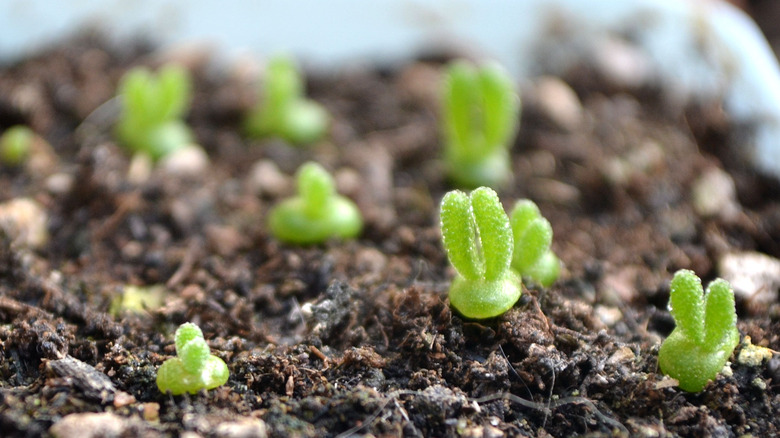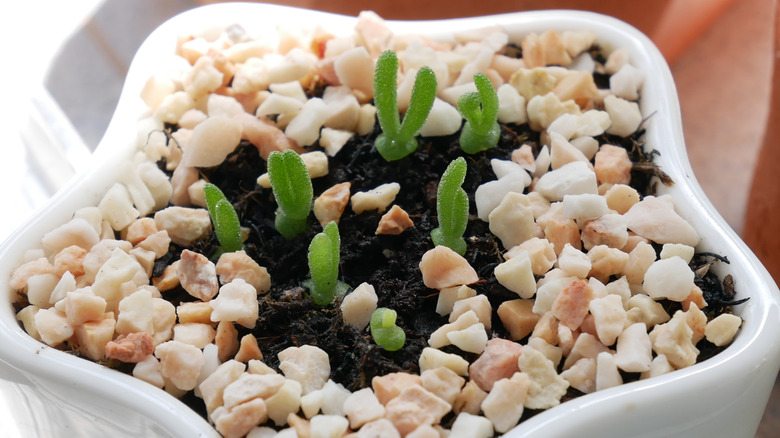The Truth About The Trendy Bunny Ear Succulents
It seems like everyone the world over has gone crazy for succulents. They're cute, inexpensive, and easy to care for — even for those without a green thumb. But once your collection starts to expand and you see the same old selection of succulents at your local nursery or hardware store, it's natural to want something new and interesting to spice things up.
Enter the bunny ear succulent, a common name for two different species: M. moniliformis and M. obconica (via The Spruce). The heads of these bright green succulents each have two upward growths, resembling perky bunny ears, and plant enthusiasts are quickly falling in love with these cute and trendy plants. But the former, M. moniliformis, tends to resemble the bunny head shape better, whereas the latter, M. obconica, grows more noodle-like projections. Both species are part of the Monilaria genus, grow in clumps, and are native to South Africa.
Amateur gardeners and seasoned botanists alike are clamoring to get their hands on the bunny ear succulent, but that's proving quite difficult. Here's why.
Several factors are limiting the number of bunny ear succulents for sale
Unfortunately, it's very difficult to find a bunny ear succulent available to purchase. First, the plants grow very slowly — putting out one "node," or bunny head, per year — which means it's not a popular plant for commercial growers (via The Spruce). It simply doesn't make enough money to justify the long wait time. Plus, when the bunny ear succulent is dormant, a period that lasts quite a while, the plant looks downright ugly, and sellers have trouble finding buyers when the plants are in this state.
Of course, you could always buy seeds, which are somewhat expensive but available to purchase on sites like Etsy. However, like most succulents, it could take anywhere from three to five years for just a few clusters to grow. Plus, seeds in their growing state are fragile and may fail if the proper light and moisture conditions aren't provided.
Your best bet is to obtain a cutting or division from another plant so you can propagate your own — or simply wait until bunny ear succulents become mainstream enough so you can get your hands on one.

